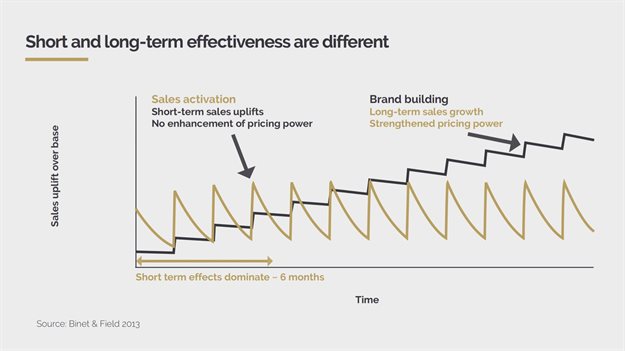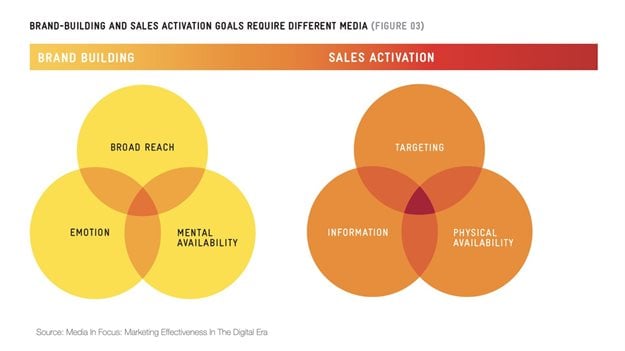#BizTrends2021: Will Covid accelerate the declining trend in marketing effectiveness?
The data in the report shows three related reasons for the decline in effectiveness:
- An increase in short-term campaigns (defined as campaigns that run for six months or less).
- An increased focus on ROI – which is an efficiency metric (not a true effectiveness metric like growth or profit) that often favours sales activation campaigns measured in the short term.
- A budget overweighting within campaigns towards activation expenditure.
It’s easy to understand how this happens during a crisis – economies are a mess, marketing budgets are squeezed and people aren’t spending. So, the focus becomes driving sales at the lowest possible cost. The trouble is, the data in the report shows that even after the financial crisis the proportion of campaigns with activation objectives continued to rise (from 47% prior, to 72% of cases analysed by 2016). Further reports in 2018 and 2019 have gone on to reiterate this same short-termism theme.
So why does all this matter – particularly off the back of a horrendous 2020? Well, chances are many marketers may double-down on sales activation objectives and efficiency metrics – negatively impacting long-term marketing effectiveness even further. And perhaps entrenching an irreversible trend in short-term marketing practices.
This should be concerning to all future-focussed marketers because previous studies have already confirmed that when effectiveness is measured over the long-term – brand building significantly outperforms sales activation.

Now before you think I’m advocating for entire marketing budgets to be directed solely into brand-building efforts, please know this is not my intention. The most effective long-term marketing approach is a combination of both brand building and sales activation – at roughly a 60:40 split (60% brand building; 40% sales activation) with a slight variation here and there depending on the category. A key point to note here is that strong brands get higher response rates from their activation efforts – making the right balance paramount.
As an example, Castle Lite has successfully combined both brand building and sales activation efforts to see incredible market share growth over the last few years. And it’s the strength, consistency and execution of the brand’s long-term “extra cold” positioning that has held everything so effectively together.
In reality, there will come a time when every brand has to evolve (even one day Castle Lite). Still, if we are not setting long-term objectives for brands and putting in place tracking activities for the corresponding long-term metrics – it becomes too easy to focus on solving short-term problems only. Particularly with access to the abundance of live data dashboards and ROI reports that can easily soak up all marketing attention and cloud the modern marketer’s longer-term view.
As marketing budgets face continued pressure moving forward in 2021, it wouldn’t be surprising to see the majority of what’s left of those budgets directed into digital media. Last year, an AskAfrica TGI report showed that TV and digital saw the largest growth during lockdown – but revenues declined as advertisers’ cash flow dried up. As this continues, digital could become the media type of choice (if it isn’t already).
The challenge again – even with digital media – is to find a balance between brand building and sales activation. While the two activities tend to favour different media types (see chart below), the “Media in Focus” report does highlight online video as a powerful brand builder in comparison to other digital formats. And it is particularly powerful when used in synergy with TV. Data analysed for the report shows that campaigns that included online video in the mix tend to be more effective – providing an interesting opportunity for how to use different media even in tough times.

So, what does all this mean heading into 2021? Well, firstly, it means acknowledging that long-term marketing effectiveness has been declining – well before Covid. And if we don’t take stock, look up from our immediate, short-term realities and think about the long-term effectiveness of brands, it will be our actions that continue to drive the efficacy down.


























